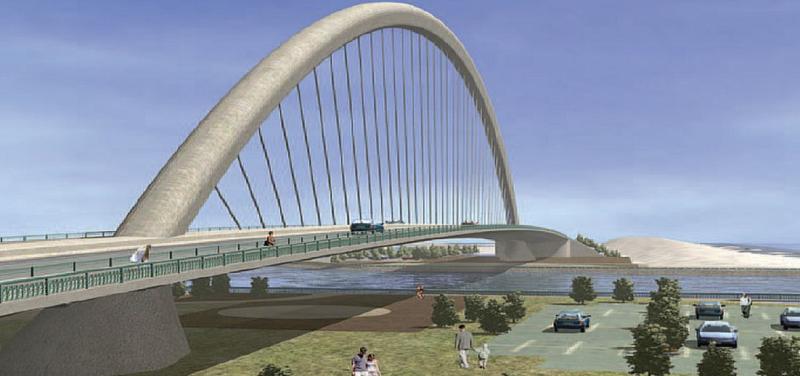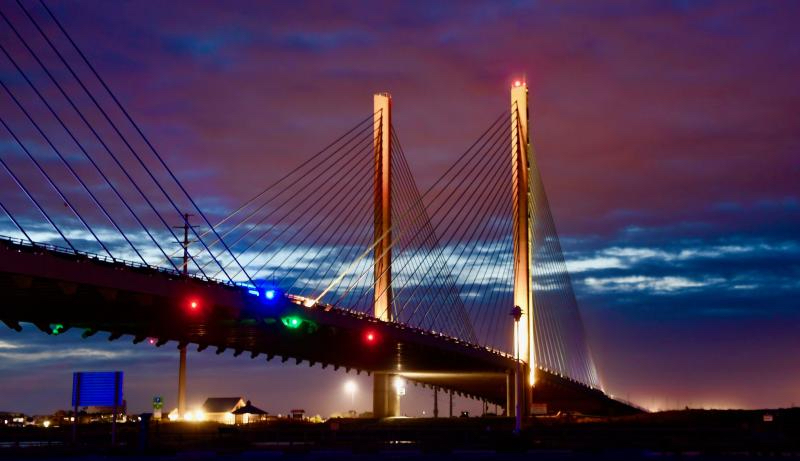Indian River tulip-design bridge fails to bloom
This is the 90th anniversary of a bridge over Indian River Inlet. The first one built in 1934 was a timber bridge, and over the next nine decades, more bridges were built in 1940, 1952, 1965, 1976 (a second span adjacent to the 1965 bridge) and 2012.
I wrote a column detailing the bridge’s history, which includes lawsuits, failed engineering, financial shortfalls and political intrigue. Storms, high tides, fast currents and shifting sands have all plagued the bridge until the most recent span opened in 2012.
The current bridge, built by worldwide leader in bridge construction Skanska USA Southeast, is a modern engineering marvel, and at $150 million, it’s the largest Delaware Department of Transportation project ever in southern Delaware.
Not enough money
Thanks to News Editor Nick Roth, another part of the bridge story has been uncovered.
DelDOT came up with a grandiose plan to build a tulip-shaped bridge with no supports in the water. The 1,000-foot span was expected to open by 2006. It didn’t happen.
After all was said and done, the bridge design was scrapped because of funding.
Then-DelDOT Secretary Nathan Hayward was a strong proponent of the tulip design. It would have been the first tulip-shaped arched bridge of more than 1,000 feet in the world. Yes, you read that right – the world.
A group of community leaders was formed to provide input on the proposed bridge. Most of the aesthetics of the bridge, including lighting and cable color, were decided by the public.
The bridge would have been cable-supported, which is a variation of a cable-stay bridge, which is what the current bridge is.
The design did not include towers for support but would have relied on placement of the cables for support, and also eliminated the need for for pilings in the inlet, which are susceptible to erosion.
The tulip-design bridge received only one bidder, and the cost was higher than estimated at $65 million. To make matter worse, DelDOT suffered a $200 million shortfall in its budget. Plans for the bridge were put on hold as construction skyrocketed to $200 million. It was so far over budget, plans were scrapped, causing more delays.
Another design scrapped
In 2006, construction began on a modified-design $125 million bridge, and little did DelDOT know what would happen over the next two years.
To begin with, there were questions about the bidding process when the bid was awarded to a company that was $800,000 over the low-bidding company.
In addition, state labor unions questioned why the company was not using union labor and state workers.
Then during the first year of construction in 2006, the large, earthen approach ramps for the bridge were visibly settling and shifting.
Facing potential labor union issues, failed engineering and a lawsuit, DelDOT scrapped yet another design and rebid the project.
The state sued the builder and ended up with a $5.25 million settlement.
The new bridge
A new design-build project went out to bid that did not include the large earthen approaches.
Skanska USA Southeast won the bid award for $150 million in 2008-09, and the bridge was completed in May 2012. It is 45 feet above the inlet with two 12-foot travel lanes, 14-foot shoulders and a 10-foot sidewalk on the east side.
State officials are still grappling with shifting sands and periodic flooding on the north side of the bridge. That’s a topic for another day.
Bridge history
1934 – Timber bridge deemed unsafe in less than five years
1940 – Swing bridge opens, collapses in February 1948 due to heavy ice flows
1952 – New swing bridge built, later closed by damage from Storm of ’62
1965 – Steel girder, two-lane bridge constructed
1976 – Second span of fourth bridge added, widening traffic to four lanes
2012 – Fifth bridge opens.























































